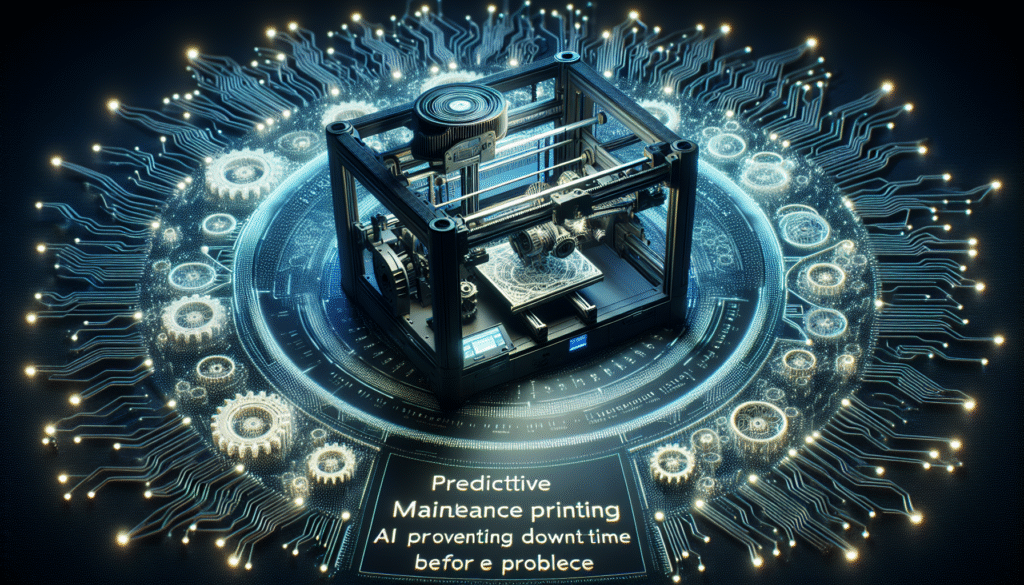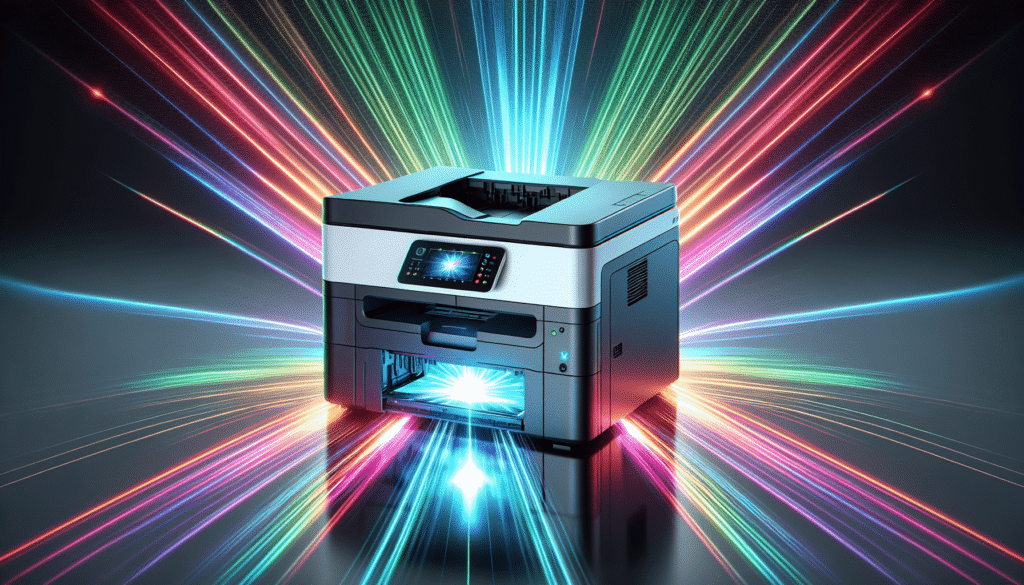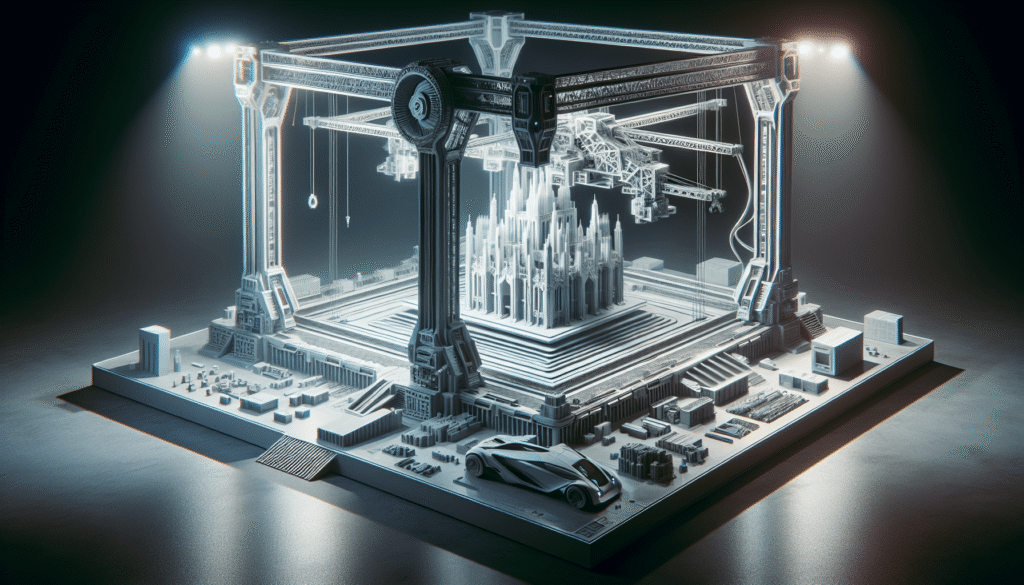Have you ever found yourself caught off guard by unexpected printer malfunctions just when you’re on the verge of submitting that crucial report or printing an important contract? Perhaps you’ve even experienced the frustration of downtime that seems to strike at the worst possible moments. Well, what if I told you there’s a mystical realm where artificial intelligence helps you prevent such disruptions in advance? Predictive Maintenance in printing could be your knight in shining armor, rescuing your office milieu from the clutches of malfunction demons. Let’s unravel this intriguing concept together.

What is Predictive Maintenance?
Predictive maintenance, unlike its more reactive counterparts, is a method used to monitor the performance and health of equipment. It accurately forecasts when a system might fail based on historical data, real-time data collection, and sophisticated algorithms. Essentially, it’s the wizardry of predicting future problems before they even have a chance to materialize. Think of it like anticipating bad weather—only this time, you’re forewarned not about whether you need an umbrella but about when your printer might take an unscheduled hiatus.
The Intricacies of Predictive Maintenance
It’s not just hocus pocus. Predictive maintenance relies heavily on data. Sensors attached to equipment continuously gather information about various parameters like temperature, vibration, and even acoustic emissions. This real-time data, when paired with historical data, paints a vivid picture that can be analyzed by artificial intelligence algorithms. These algorithms assess the probability of a component failing, providing ample warning for maintenance before a major issue arises. This strategy is a staple in diverse industries, and now it’s making waves in the printing sphere too.
Why Printing? Why Now?
One may ponder why predictive maintenance is particularly poignant in the printing industry at this juncture. Printing technology has evolved significantly, yet the machines themselves remain susceptible to wear and tear, not to mention the temperamental whims of office coffee spills. In an era where speed and efficiency are pivotal, the downtime initiated by machine failures can prove costly. Integrating AI and predictive maintenance aims to eliminate these disruptions proactively, ensuring a seamless printing process.
Historical Context of Printer Breakdowns
Before diving deeper into the AI realm, it’s fascinating to reminisce about the past woes of printer technology. Remember the days of dreaded paper jams and the cacophony of clunky sounds? Many of us can certainly relate to the inexplicable urge to give the printer a gentle (or maybe not-so-gentle) tap on its side, hoping some magic would set things straight. These seemingly ancient struggles signaled the need for a solution that went beyond just reactive repairs.

The Role of AI in Predictive Maintenance
The core of predictive maintenance in printing lies in artificial intelligence. AI algorithms are employed to forecast possible malfunctions by analyzing patterns in data collected from the equipment. It’s like having an oracle peering into the future but with pages of insightful data rather than a crystal ball.
AI Models that Predict Failure
The magic of AI in predictive maintenance lies within certain models and techniques:
-
Time Series Analysis: This involves analyzing a series of data points collected over time to identify trends and predict future behavior.
-
Machine Learning Algorithms: These include supervised learning models (which learn from known input-output pairs) and unsupervised learning models (which identify patterns or groupings in data).
-
Anomaly Detection Models: AI identifies deviations from the established norm, signaling potential problems.
-
Regression Models: These determine relationships between variables and predict maintenance needs.
Imagine they’re like your diligent office assistant, except these assistants never tire or need coffee breaks, and they always have good news about averting potential disasters.
Benefits of Predictive Maintenance in Printing
The benefits of employing predictive maintenance in the printing world are as vibrant as a freshly printed page:
-
Minimized Downtime: By predicting and troubleshooting potential issues ahead of time, companies can substantially reduce the lulls in productivity.
-
Cost Efficiency: Preventing problems before they occur often translates to savings on emergency repairs and replacements.
-
Improved Equipment Lifespan: Regular maintenance based on predictive insights can extend the useful life of printers and other equipment.
-
Increased Productivity: When machines function optimally without surprise interruptions, employees can maintain their workflow seamlessly.
A Practical Example
Consider a bustling publishing firm that relies heavily on its series of printers. By utilizing predictive maintenance, the firm’s printers notify the technical team of a potential failure four days in advance due to unusual vibration patterns detected by sensors. The team intervenes with minor upkeep, avoiding what could have been a significant breakdown translating into downtime and lost revenue.
Achieving Predictive Magic: Steps and Strategies
To embrace predictive maintenance, you must first establish a solid foundation:
-
Data Collection: Equip your printers with the necessary sensors to measure performance indicators continuously.
-
Data Analysis: Employ AI algorithms to process the amassed data, identifying patterns and potential anomalies.
-
Routine Evaluation: Regularly assess the effectiveness of your predictive maintenance program and make necessary adjustments to improve accuracy and efficiency.
-
Training the AI: Like any good sorcerer’s apprentice, make sure the AI is constantly learning. Feed it new data and scenarios to improve its accuracy over time.
Challenges in Implementing Predictive Maintenance
While predictive maintenance sounds alluring, it doesn’t come without its share of challenges:
-
Initial Costs: Installing necessary equipment and technologies may require considerable investment.
-
Data Overload: Managing the vast quantities of data generated can be overwhelming without the right infrastructure in place.
-
Training and Expertise: Acclimating employees to new technologies and ensuring they possess the skills to interpret AI data is crucial.
-
Integration with Existing Systems: Ensuring seamless compatibility with existing equipment can sometimes be complex.
Overcoming Hurdles
Yet, these challenges are far from insurmountable. By approaching the process incrementally and working closely with tech experts, organizations can ease their transition into the digital wizardry of predictive maintenance.
The Future of Printing and AI
A glimpse into the future reveals that AI will likely become even more ingrained in the fabric of the printing industry. As machine learning models become more sophisticated, the accuracy of predictive maintenance will only improve, leading to a near-zero margin of unexpected failure. Envision a harmonious office ecosystem where printers not only meet but anticipate your needs, ready to print the next epic tale sans hiccups.
The Horizon of Possibilities
Imagine a universe where printers might even self-correct minor issues, slightly altering paper width or ink density with a digital wink to course-correct. We could see further collaboration with other smart office technology, forming an environment that is not just reactive but anticipative.
Summing Up Predictive Maintenance Printing
Predictive maintenance in the realm of printing is a game-changer, empowering organizations to reclaim control from the unpredictable whims of equipment downtime. By adopting AI innovations, companies are poised to enhance efficiency, optimize costs, and fortify their printing infrastructure against unforeseen interruptions. It might not be too far-fetched to think of predictive maintenance as the magic wand modern businesses needed all along, waving away problems with the icy precision of data analysis.
Let us imagine our workplaces where breakdowns exist only in the tales of yesteryear. With predictive maintenance in the driver’s seat, we’re stepping into a world where uptime is the norm, errors are foreseen, and printers are the loyal stewards dutifully tending to our every document desire.


